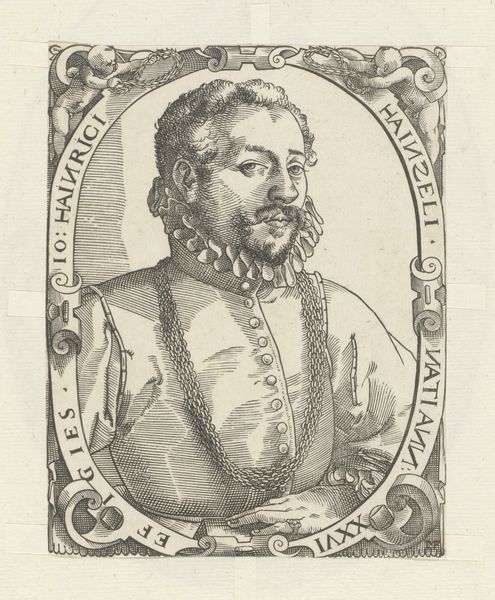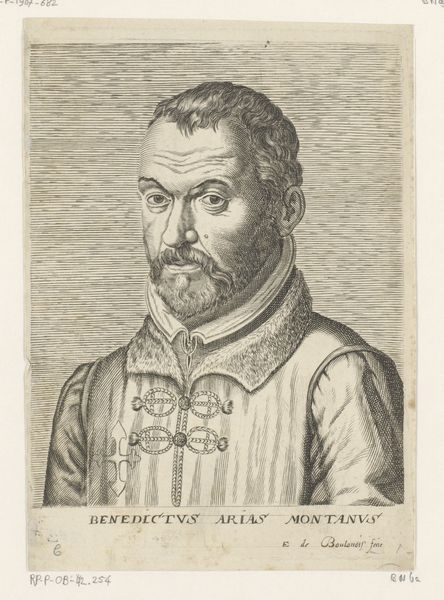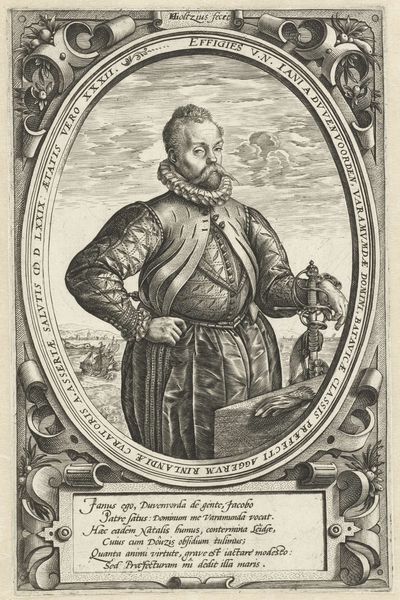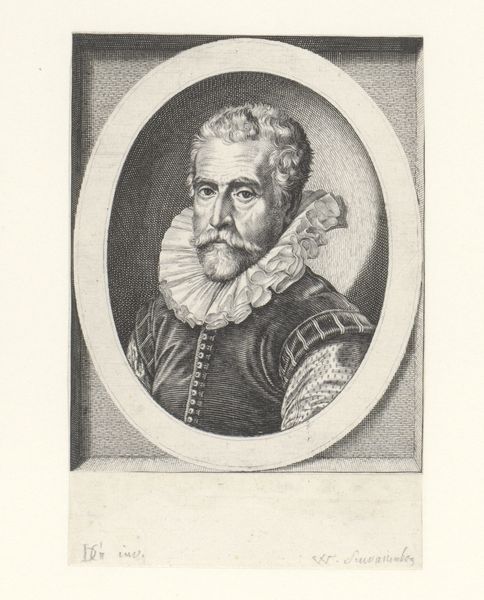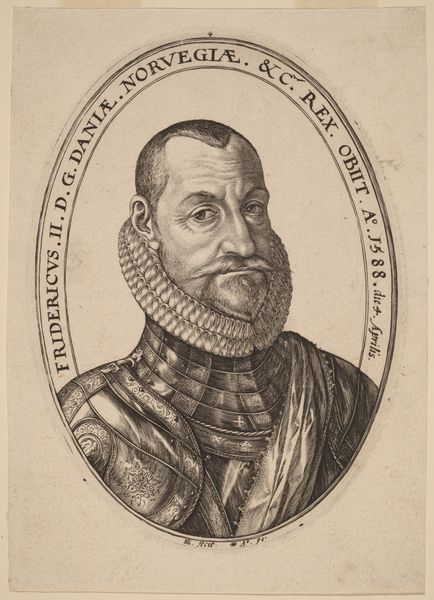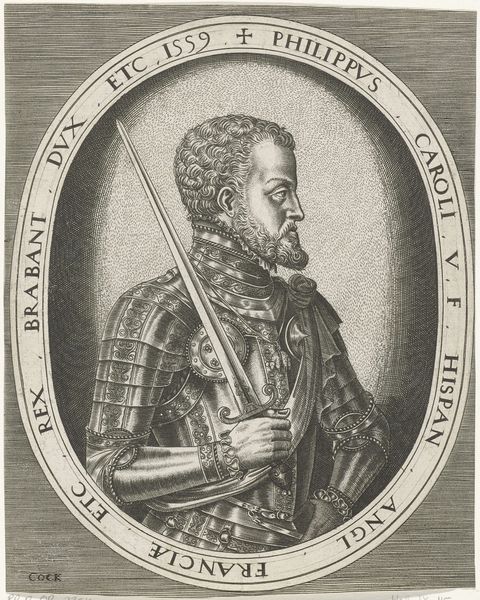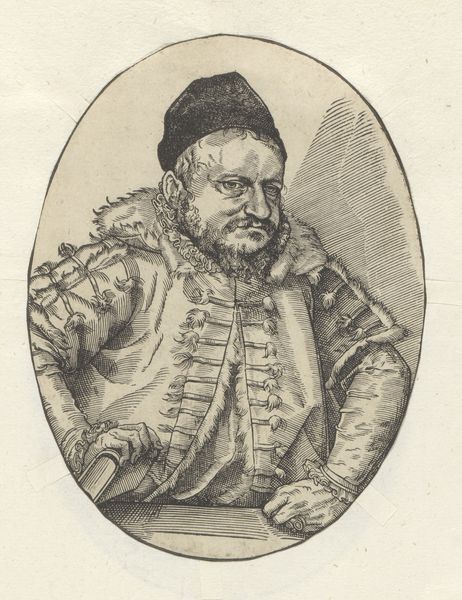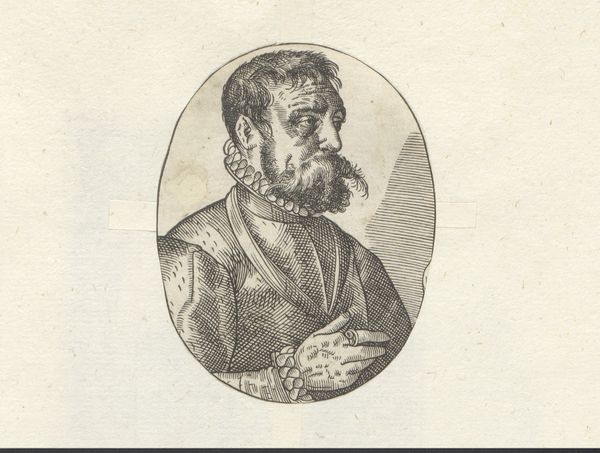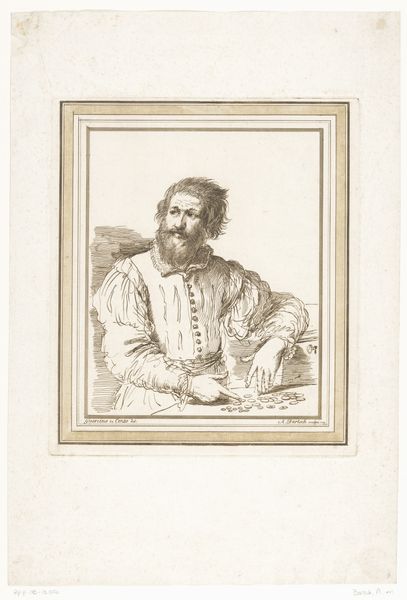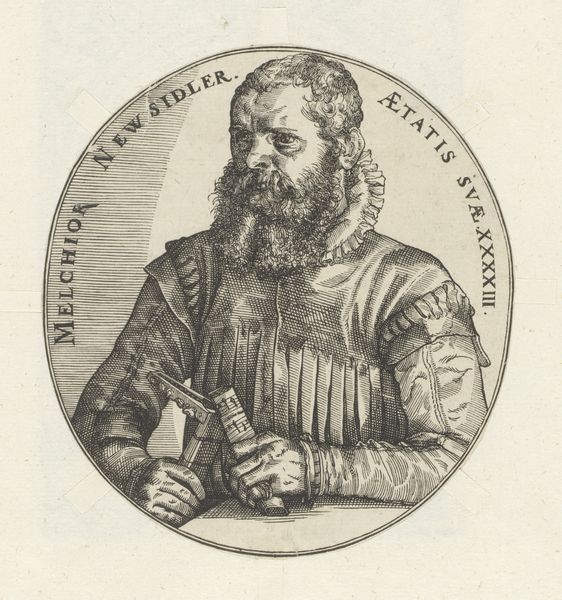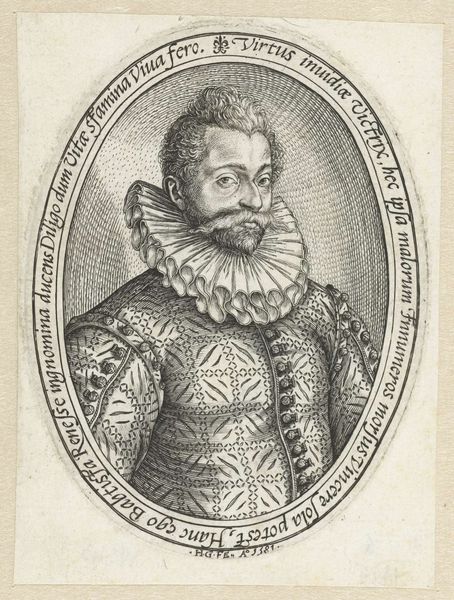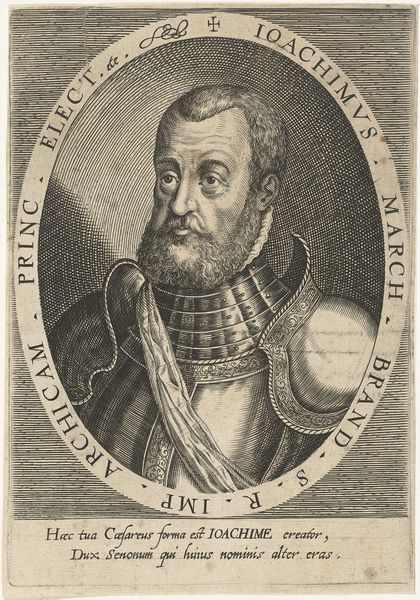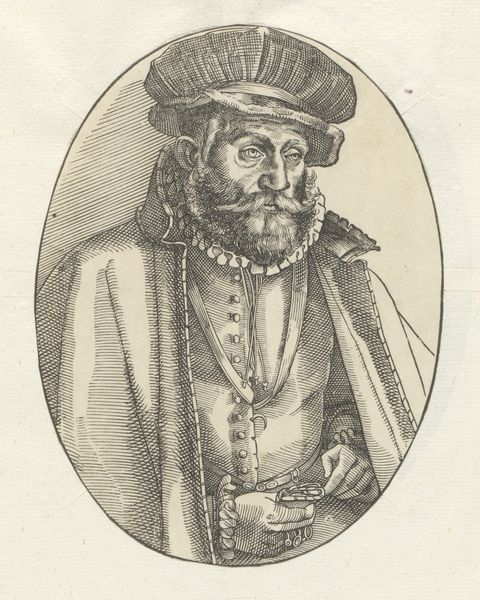
engraving
#
portrait
#
old engraving style
#
mannerism
#
portrait drawing
#
history-painting
#
engraving
Dimensions: height 147 mm, width 114 mm
Copyright: Rijks Museum: Open Domain
Editor: Here we have "Portret van een onbekende man," an engraving from between 1549 and 1584, by an anonymous artist. It has an almost stark feel, because of the medium. How might we interpret this portrait within its historical moment? Curator: An engraving like this served a vital public function during the Renaissance. Consider it less as high art and more as a form of visual communication. How do you think it might have circulated? Editor: Maybe as a printed sheet, or bound into a book? To spread ideas? Curator: Exactly! These prints were often reproduced and distributed widely, helping to solidify someone's public image. A portrait, even of an unknown man, suggests power and status that would be very aspirational. The chain and detailed clothing imply a certain social standing, reflecting the concerns about hierarchy in the 16th century. Think about the institutions that this image might have been linked to; political organizations, guilds, wealthy families. Can we really consider it "anonymous" if it reflects the dominant culture so closely? Editor: So, it's not necessarily about capturing a likeness but more about conveying a particular social message? Curator: Precisely. The political forces were deeply invested in image construction, and dissemination of acceptable images through print culture was their mandate. These images often helped to solidify hierarchies and project idealized versions of leaders and influential figures to the masses. Editor: I never really thought about the political dimension of what appears to be just a simple portrait. Curator: Examining art this way always allows a deeper understanding of what these artworks might mean for a society. There is much more to portraits than mere appearance.
Comments
No comments
Be the first to comment and join the conversation on the ultimate creative platform.
